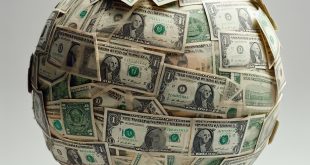The U.S. dollar continued its upward momentum on Tuesday, reaching a four-month peak as financial markets factored in the impact of an incoming Donald Trump administration and a potentially more hawkish Federal Reserve stance. At 04:00 ET (09:00 GMT), the Dollar Index, which measures the currency against a basket of six major counterparts, climbed 0.3% to 105.740, its highest mark since early July.
Trump’s Trade and Economic Policies Lift the Dollar
The U.S. dollar has been on a steady rise over the past week, fueled by speculative trades anticipating policy shifts under President-elect Donald Trump. With the Republican Party expected to control both the House and the Senate, Trump will likely have fewer obstacles in implementing an agenda focused on tax cuts and protectionist measures. These policies could boost inflation, creating conditions for a less accommodative Federal Reserve.
In line with these expectations, traders have adjusted their outlook on the Fed’s next move. The probability of a quarter-point interest rate cut in December has dropped to 69%, down from nearly 80% just a week earlier, based on data from CME Group’s FedWatch Tool.
Euro Weakens on U.S. Dollar Strength and Economic Woes
Meanwhile, the euro continued to struggle, with EUR/USD slipping 0.3% to 1.0623, hovering near a seven-month low. The euro’s decline reflects both the strength of the dollar and the weakness within the eurozone economy, which has left the European Central Bank committed to easing measures while the U.S. gears up for potential tightening.
As markets brace for significant changes in U.S. fiscal policy and watch closely for hints from the Federal Reserve, the dollar could continue to hold its gains, putting further pressure on rival currencies.
 Noor Trends News, Technical Analysis, Educational Tools and Recommendations
Noor Trends News, Technical Analysis, Educational Tools and Recommendations





